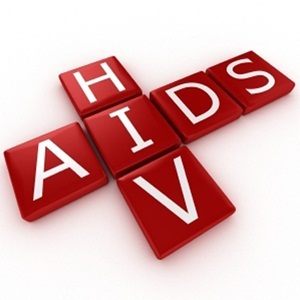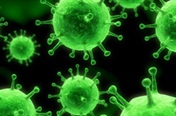
Alternative names: Human Immunodeficiency Virus, Acquired Immune Deficiency Syndrome
HIV/AIDS is caused by the Human Immunodeficiency Virus (HIV).
The virus is mainly transmitted through sexual intercourse but can also be passed down from mother to child during pregnancy, childbirth and breastfeeding, or acquired via blood transfusion with infected blood, the sharing of needles (e.g. during drug use) or through needle-stick injuries (if you’re a healthcare worker, for example).
Once you’re infected, the virus remains in your body for life. Although there currently isn’t a cure for HIV, antiretroviral treatment (ART) helps to keep the virus under control and enables people living with HIV to lead a full, productive life.
In addition, we now also know that ART helps to prevent the onward transmission of HIV – i.e. if you’re HIV-positive, and on ART, there’s a lower risk of transmitting the disease to others.
Acquired Immune Deficiency Syndrome (AIDS) is a chronic, life-threatening disease caused by the HI virus. The virus attacks and gradually destroys the immune system (which helps the body to defend itself against infection and disease). Without treatment, people with HIV become susceptible to a variety of opportunistic infections – so called because they take advantage of the body's weakened immune system.
These infections are unlikely to occur in people with healthy immune systems. AIDS develops during the final stages of HIV infection and is characterised by a CD4 cell count of less than 200 cells per mm3 or the presence of any AIDS-defining condition.
Strictly speaking, AIDS isn’t a specific illness but a collection of many different conditions that manifest in the body (or in specific parts of the body), because the HI virus has weakened the immune system to such an extent that it can no longer fight disease.
It may take years for the immune system to deteriorate to such an extent that someone living with HIV becomes ill and is diagnosed with AIDS. During this time, they may look and feel perfectly well.
This explains why so many people are unaware that they’re infected with HIV. But even though they feel healthy, they can still transmit the virus to others.
The exact origin of the HI virus has been a topic of much debate over the past few decades. We now know that, at some point in the 1970s, the virus began spreading across the globe, although it first came to the attention of medical authorities and researchers in the early 1980s. The virus was, however, born much earlier.
Recognition of the virus in the 1980s marked the beginning of the epidemic as we know it today. In South Africa, the epidemic started to explode in the early 1990s and, by the year 2000, more than 20% of the population had been infected.
Read more
Symptoms of HIV/AIDS
Reviewed by Dr Pooja Balani, MBBS (UK). Medical Technical Advisor at the Southern African HIV Clinicians Society. March 2018.




 Publications
Publications
 Partners
Partners
















